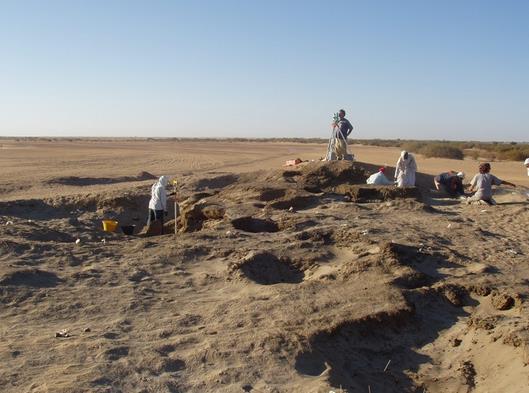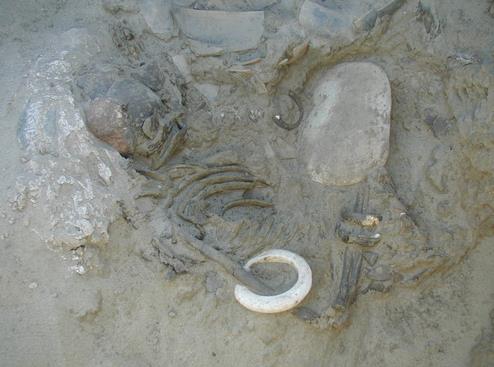Barley and wheat residues in Neolithic cemeteries of Central Sudan and Nubia
From:Past Horizons NetWriter:Date:2015-02-10
A research team successfully identified ancient barley and wheat residues in grave goods and on teeth from two Neolithic cemeteries in Central Sudan and Nubia, showing that humans in Africa were already exploited domestic cereals 7,000 years ago and thus five hundred years earlier than previously known.

Plant particles found during the excavation of this Neolithic cemetery in Nubia (Sudan) turned out to be traces of domestic cereals when analysed in a lab. Copyright: D. Usai/ S. Salvatori
The results of the analyses were recently published in the open access journal PLOS ONE.
Barley and wheat crops
Dr. Welmoed Out from Kiel University said, “With our results we can verify that people along the Nile did not only exploit gathered wild plants and animals but had crops of barley and wheat.”
These types of crops were first cultivated in the Middle East about 10,500 years ago and spread out from there to Central and South Asia as well as to Europe and North Africa – the latter faster than expected.
“The diversity of the diet was much greater than previously assumed,” states Out and adds: “Moreover, the fact that grains were placed in the graves of the deceased implies that they had a special, symbolic meaning.”

One of the graves at the Neolithic cemetery in Nubia (Sudan), containing a skeleton and plant material deposited behind the skull (white area at the left picture margin)
The research team, coordinated by Welmoed Out and the environmental archaeologist Marco Madella from Barcelona, implemented, among other things, a special high-quality light microscope as well as radiocarbon analyses for age determination.
Hereby, they were supported by the fact that mineral plant particles, so-called phytoliths, survive very long, even when other plant remains are no longer discernible. In addition, the millennia-old teeth, in particular adherent calculus, provide evidence on the diet of these prehistoric humans due to the starch granules and phytoliths contained therein.

